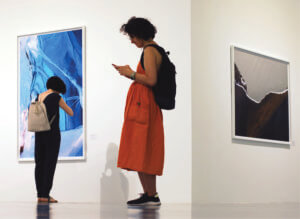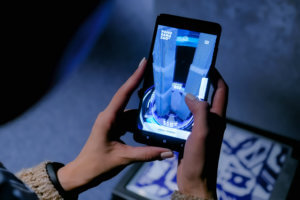Physically Distanced Museums
- White Papers
What is the museum of the future? How will museums operate – physically, intellectually, financially – long after COVID19? There’s big transformation on the horizon for cultural institutions, but there’s also the immediacy of ‘how can we reopen? When can we reopen?’ Museums need to connect with their communities quickly and deeply, to garner the kind of support (visitorship, donors, and community members who will advocate for the institution) they will need to survive and pivot from this time. With nineteen years designing experiences for museums, zoos, aquariums, theme parks, and more, Thinkwell has amassed deep knowledge of best practices, crisis management and transformation, and operations across industries. While Thinkwell is helping our museum clients meaningfully wrestle with the big questions of long-range transformation, we’re also helping them think through the ‘day after tomorrow’ – what will it look like as stay-at-home orders ease, but before a viable vaccine is widely available.

So what does ‘physical distancing’ look like in an institution that probably has some brain-bending, physical-distancing-rules violating combination of:
- Multiple constricted entries and exits (into and out of the building, exhibit halls, retail, restaurants, and bathrooms)
- Hands-on interactives and touch-screens for ticketing, payment, or exhibit content
- Delightful historic structures that can’t be modified
- Maybe even a children’s area featuring a ball pit, dress-up activities, and a climbing structure
There are no easy answers. There’s no magic bullet. But there are tools and a deliberative process that can help guide decision-making.
Museums now find themselves in a world that other location-based experiences have been doing for years. Theme parks calculate guest density and flow, and adjust designs accordingly, with a rigor that even Scrooge himself would be awed by. They deal with queue lines, spacing, and hiding the true length of a queue or making it more entertaining. Theme parks and zoos have made materials and cleaning protocols choices based on durability, operational, and health concerns to an extent indoor museum experiences largely haven’t needed to. Mission-driven spaces like museums, zoos, aquariums, and other cultural attractions can benefit from the years of real-world experience other venue types have already amassed. In fact, they must capitalize on this information – there’s no time to waste.
Thinkwell has developed a Playbook for cultural attractions to utilize as they plan not only for the first few weeks of reopening, but also the months until the COVID threat is mitigated globally and the new reality beyond. In the first few weeks of operations, yes, tape on the floor can help with physical distancing. But it’s not an elegant or guest-friendly solution, nor is it a look or emotional message institutions want to sport for the next year. Ours is a methodical yet nimble approach, considering every element of operation while simultaneously centering the experience of the institution. Solutions that diminish the soul of an institution and hobble it from fulfilling its mission are not good ones. As part of our Playbook, we define five main areas to consider as institutions plan for reopening and new operations. By focusing on these key elements, it frames internal review and helps focus the questions.

For example, one of the five areas is “The Big Draw”, which naturally guides the iterative planning process. What are the key experiences to have open as part of your Big Draw for guests? Where are their risk points? Interactives – and how to handle them – is another of the five key areas for consideration. Most museums will lack the time, money, and staff resources to convert every interactive immediately. But in many exhibits, interactives are a key part of the experience. Which interactives are foundational to have working? Our Montreal team is already developing elegant, seamless solutions to transition touch-screen interactives into gesture, voice-controlled, or personal digital device-mirrored experiences, and our teams are also re-envisioning what the new interactivity entails.
Museums need to open. Period. Their communities want and need them, as shown in the recent research work spearheaded by the American Alliance of Museums, and museums need ticket revenue in order to survive. Museums are a critical economic engine, too, and their successful reopening will pay off in a variety of ways. By being thoughtful, yet swift, in planning for “the Day After Tomorrow”, museums can invest their time and limited resources to best effect, helping their communities heal and turn towards the future.
Related Posts
Disability Access: In It for the Long Haul
- White Papers
In May 2021, Thinkwell and RUH Global began a series...
Trend Report Deep Dive: Taming the Algorithm
- White Papers
The “Algorithm.” As a colloquial term for the recommendation engines...
Access for All
- White Papers
The wheelchair access queue line, the closed-captioning on a ride...
